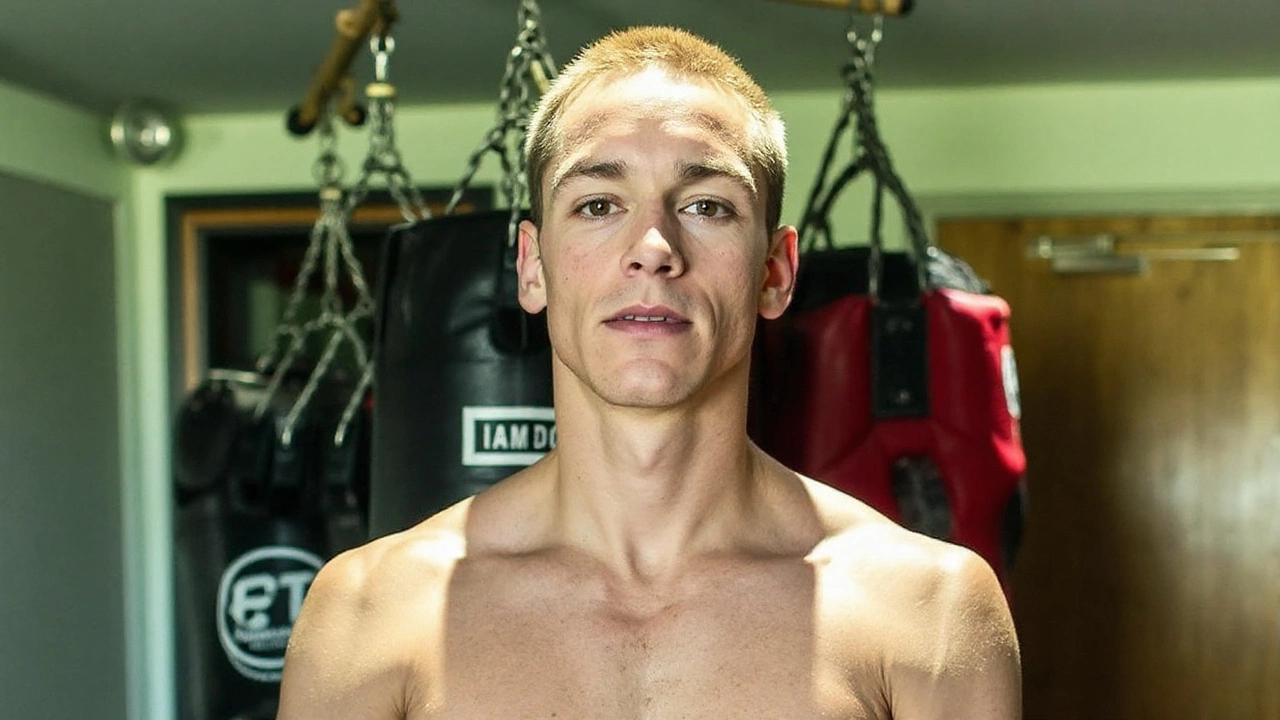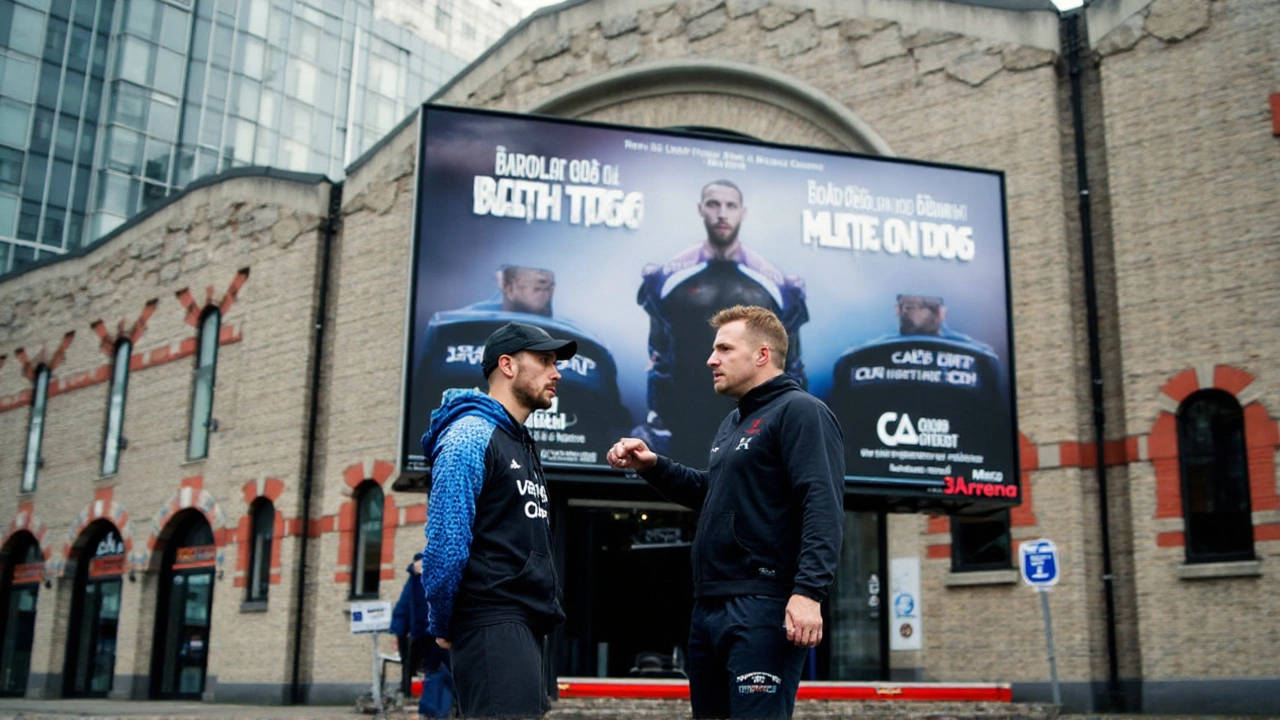Conlan flips the script in Dublin homecoming
On a night framed as a long-awaited homecoming in the Irish capital, Michael Conlan delivered the clean finish he needed. The Belfast featherweight stopped Leeds technician Jack Bateson in the fourth round at Dublin’s 3Arena, turning a tight, tactical fight into a decisive statement with a single looping right hand. For Bateson, who came in seeing this as the moment to crash the top tier, the result was a jolt: a bright start undone by a brief lapse and a patient finisher in front of a loud crowd of more than 5,000.
Bateson, now 20-3-1, had built the night around his advantages—height, reach, and a set of nimble feet that could keep him off the tracks of a crouching puncher. His last outing, a December meeting with Danny Quartermaine for the IBF and WBO European straps, ended early on a clash of heads. It left him stuck between frustration and ambition. Dublin looked like the fix: a high-profile dance partner, big lights, and the chance to silence a partisan arena.
Early on, he did the right things. Bateson circled to his left, then trimmed angles to the right, shooting a double jab and stepping out before Conlan could set his feet. He kept the exchanges short. If the first minute belonged to feints and footwork, the second belonged to distance. Conlan reached, Bateson reset, and the crowd’s roars came more from expectation than impact. It was a measured start, exactly what the Leeds man needed.
The second round showed the same pattern, but with a flash of offense that hinted at more. As the clock wound down, Bateson stepped in behind a sharp, snapping double jab and let a right hand ride over Conlan’s guard. It landed clean. The punch didn’t wobble the Belfast man, but it did confirm the gap Bateson had found: touch, shift, fire, exit. If you were in Bateson’s corner, you liked what you saw—calm under pressure, no reckless trades, the script intact.
Then came the third, and the mistake that changed everything. Whether it was confidence from that late success or a desire to bank a big moment in hostile territory, Bateson planted his feet and traded. He got off a solid right cross, but Conlan kept his base under him and fired a short right hook inside. It wasn’t a wild shot. It was tight, quick, and thrown from balance—exactly the kind of punch that pays off when both fighters sit down at the same time. Bateson went down. He beat the count, and it looked more like a balance spill than a heavy hurt, but psychology matters. The knockdown told Conlan the timing was there and the power was enough.
Momentum flipped. Conlan, who had been hunting angles from a crouch and trying to draw leads earlier, now had proof his counters would find a home. He didn’t rush. He trimmed the ring, kept Bateson near the ropes a beat longer, and made the Leeds man work harder to reset the distance. When Bateson tried to move laterally, Conlan shaded to the outside foot and cut him off.
The end arrived in the fourth round with a shot Conlan had been shaping since the knockdown. Bateson dipped, paused a hair in mid-range, and the looping right hand arced over and crashed home. The shot put him down heavy. Bateson tried to rise and looked to tweak his ankle in the scramble, forcing the referee to wave it off as he struggled to steady himself. It was the right call. There’s bravery, and then there’s damage control.
For Conlan, the finish landed with extra weight because of the setting. This wasn’t Belfast. This was Dublin, his first time headlining the Irish capital as a professional, with the expectation and scrutiny that come with any top-billed home date. He needed a performance that didn’t just win on points but felt definitive. He got it. A shaky start turned clinical, then conclusive.
The styles made sense on paper. Bateson’s best path was to deny exchanges, keep the fight long, and let his feet do most of the work. Conlan’s best look was the opposite: compress the ring, get into mid-range, and catch the taller man on exits or in the pocket. The first two rounds belonged to the blueprint from Leeds. The second two, decisively, to the Belfast rewrite.
There’s a lesson in the switch. Fighters who rely on rhythm—jab, step, touch, step—need discipline to ride out the full twelve without indulging the urge to “make a point.” One trade too many can flip the night. That’s what happened in the third: Bateson’s sound structure bent for a moment, and Conlan—who has always been sharp with placement even in tougher nights—made him pay with the punch that changed the temperature of the arena.
Bateson’s ankle scare at the end adds an irritating footnote to the loss. He’ll need checks and time before mapping the next move, but the bigger task is mental. He came in off a no-contest type ending in December, saw this as his ticket to higher ground, and ran into a wall just as he reached the door. He isn’t out of the conversation—20 wins matter, and the skill set is there—but the route back now likely runs through a hard reset: rebuild fights, a recommitment to the game plan that got him here, and the willingness to stick to it when the crowd wants chaos.
From the other corner, Conlan’s win slots neatly into a broader story. He’s had nights where the risks of his style cost him, and nights where his timing and craft carried the day. This one leaned toward the latter. A single, clear finish against a capable mover is the kind of result that can thaw matchmakers. It doesn’t guarantee a title shot, but it restores momentum and puts his name back into the shortlists for meaningful fights on either side of the Irish Sea.
The featherweight picture remains crowded. European routes are busy; world-level doors open and shut fast. A night like this helps because it answers two questions at once: Can Conlan control a disciplined mover? Yes, once he’s found the timing. Can he close when he gets the chance? Emphatically yes. Those answers matter when promoters look for opponents who will engage without turning the night into a wrestling match.
As for how the fight was won tactically, the details were simple, which is usually the point. Conlan didn’t chase headlong. He edged in behind a high lead hand, twitched his shoulders to draw that first jab, and then sat on counters once he felt the return. He also adjusted spacing after the early rounds, shaving a half-step off his entries so Bateson couldn’t reset cleanly. When the opening appeared, he didn’t load up; he let the right hand travel with a relaxed arm, which is why it landed fast and heavy.
Bateson did enough early to remind everyone why he was a live opponent. The double jab had bite, he changed levels well, and his exits were clean until the moment they weren’t. What let him down wasn’t craft but impulse. You can see how it happens: the jab is landing, the crowd is restless, you feel the fight tilting your way, and you decide to stamp the round with a trade instead of a turn. Against a counterpuncher with good balance, that’s the trap.
The setting added an edge. Dublin embraced Conlan, but it wasn’t a carnival; it was tense and expectant. The roars swelled when he feinted, then dipped when Bateson’s feet took the sting out of the exchanges. After the knockdown in the third, the noise changed—less hope, more certainty. That kind of shift can speed up both men’s decisions: Conlan pressed smarter, Bateson tried to get it back, and the finish came.
What now? Bateson’s team will want activity, not another long wait. A return against a fellow mover, scheduled over ten, makes sense—something that rewards discipline and lets him stack rounds without feeling forced to trade. If the ankle needs rest, the calendar pushes him toward a late-winter slot. The key is to rebuild rhythm and belief, not chase a shortcut that isn’t there.
Conlan, meanwhile, has leverage again. A domestic headliner is back on the table, and a European-level opponent could anchor a card without needing a belt to sell it. If the right opportunity appears, he can step up a level, but there’s no demand to sprint. The clean finish buys patience, and patience buys better choices.
Nights like this hinge on small choices more than big speeches. Bateson made the right ones for six minutes, flirted with risk for a few seconds, and paid for it. Conlan saw an opening, took it, and sent the arena home satisfied. That’s the sport stripped down: feet, timing, and the one punch you can’t take back.

Fight snapshot and stakes
Date: September 5, 2025. Venue: 3Arena, Dublin. Crowd: over 5,000, leaning loud and local. Stakes: no belts on the line, but reputations were. Bateson sought the springboard he missed after the Quartermaine head clash. Conlan wanted a homecoming win that felt like a new chapter rather than a rerun. On the scorecards it never got far; on the ledger it will stand out for how fast the mood flipped.
Bateson leaves at 20-3-1, still hunting that signature scalp. The skill set that troubled Conlan early is still there; the next step is making sure the plan survives the first counter. Conlan leaves with a stoppage that reads well and a clearer path to bigger dates. In a division where one clean punch can write the night, he found the one that mattered.

Write a comment